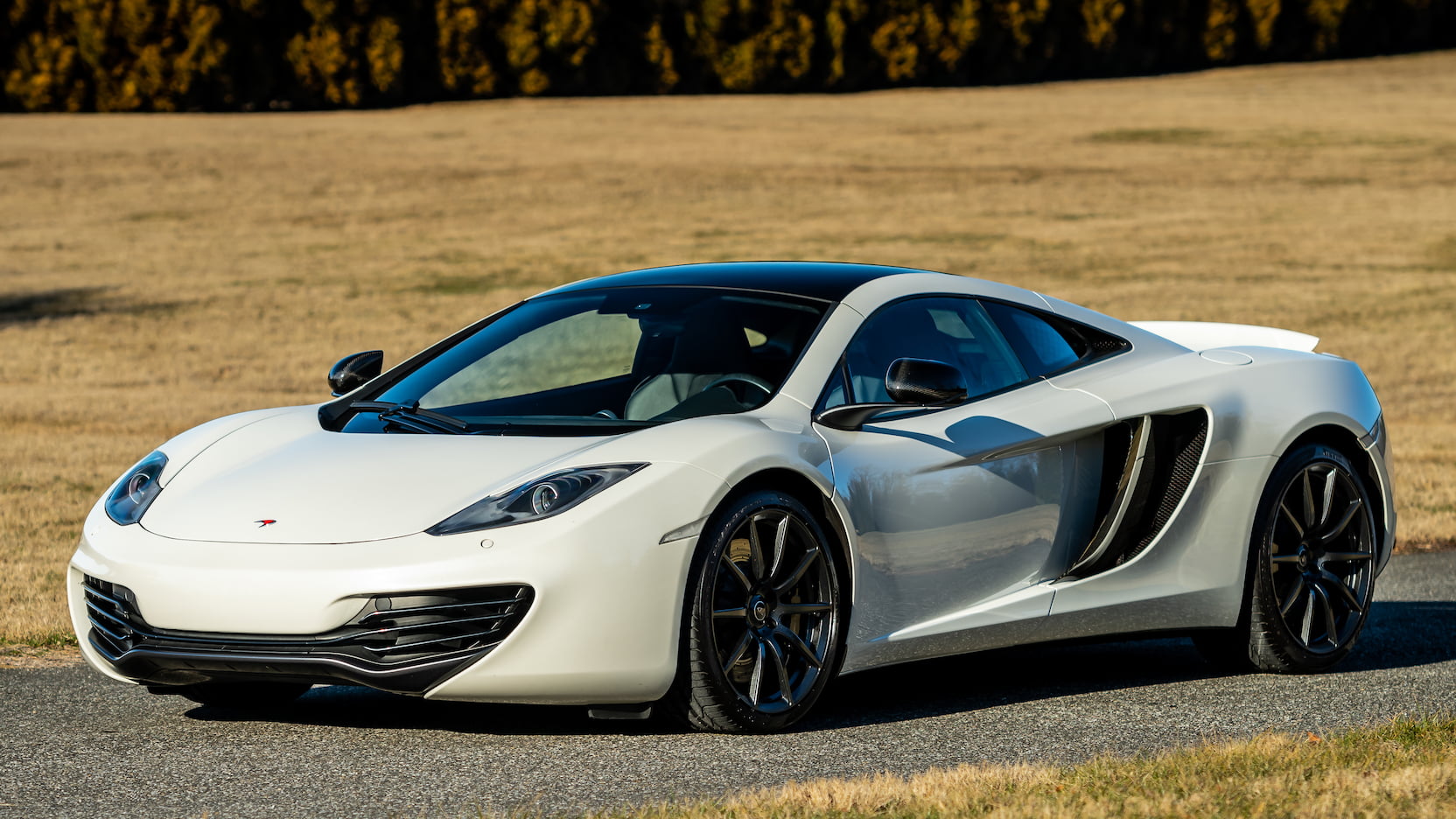McLaren MP4-12C SSG Transmission Detailed
Tue, 05/24/2016 - 22:13
There are many amazing facts about McLaren’s new super car the MP4-12C that makes it superb. Its engine for example the high-tech V8 which makes over 600 PS easy peasy.
But that engine alone could not give the car the performance it delivers without the help of a new dual-clutch transmission. This unit sets new standards in lightness, performance and durability of DSG gearboxes. It also has super fast changing speed. Clearly, McLaren wanted to beat the Ferrari 458′s DSG with this one!
It comes form supplier Oerlikon Graziano, who has also recently started production of transmissions for the new Lamborghini Aventador and for the new Aston Martin Vantage S, each one using a different technology carefully matched to the character and technical requirements of the vehicles.
Technical details of McLaren MP4-12C’s new Sequential Shift Gearbox in the press release below:
The McLaren MP4-12C’s new Sequential Shift Gearbox (SSG) is not only the lightest and most compact in its class; supplier Oerlikon Graziano says it also sets new standards for the refinement and durability of a Dual Clutch Transmission (DCT).
“McLaren has a very clear understanding of its brand and of the type of cars that it should make. This is reflected in the technologies and innovations that are chosen for their powertrains,” explains Oerlikon Graziano head of automotive transmissions Paolo Mantelli. “As well as being immensely fast and dynamically capable, the cars must be comfortable, refined, efficient and a pleasure to drive every day. We worked closely with McLaren Automotive’s engineers to develop a new transmission that would help them meet these targets.”
A DCT-type transmission was the natural choice as it combines smoothness and refinement with the possibility to change gear quickly with no torque interruption and therefore no reduction in acceleration. It also allowed a highly sophisticated control system, developed in conjunction with world-leading DCT controls specialist Vocis (a subsidiary of Oerlikon Graziano), whose UK-based team has managed some of the world’s most challenging and prestigious DCT programmes.
The compact dimensions were driven by McLaren’s desire to maximise passenger space without compromising dynamics. A three shaft architecture was chosen because the parallel secondary shafts help to minimise gearbox length, allowing the engine to be mounted further back. All eight ratios use Oerlikon Graziano’s high-performance synchronisers, further optimised to allow substantially faster changes without compromising durability.
“We wanted to achieve genuinely fast, smooth shifting without any of the ‘tricks’ that can be employed to make a DCT feel fast,” says Vocis managing director Mike Everitt, who’s team also calibrated the transmission.
“The secret is to get the very best out of the whole control system with a highly-optimised interaction between the software and the hardware. This ensures that the responses are not just quick and accurate but are also consistent and progressive. That means rigorous attention to the fluid dynamics and to the design and calibration of the control algorithms, which are constructed using our proprietary architecture.”
An unusual feature of the McLaren transmission is a ‘pre-cog’ facility that can make the already class-leading change time feel almost instantaneous. The driver can pull the gear up/down paddle to the first detent position, commanding the transmission to engage the next gear and preparing the oncoming clutch. When the paddle is pulled to the second detent, the gear shift is completed in a fraction of the time required by a conventional DCT. The system also makes the shift more engaging than typical DCTs with single-pull paddle shifts.
McLaren’s passion for weight reduction led to extremely sophisticated analysis of the transmission hardware with numerous iterations so that the maximum amount of material could be removed without compromising strength or stiffness. “McLaren set very high standards for durability too, so everything was tested in a virtual environment, then on purpose-designed rigs at our laboratories before whole-vehicle testing,” says Mantelli.
Rig testing was also used to validate the designs for the very high dynamic loads that the car can deliver. “At 1g, the oil will be at 45 degrees to the horizontal. The McLaren can significantly exceed 1g both cornering and accelerating and substantially exceed it under braking. Its dynamic performance is phenomenal, which makes managing oil flows critically important,” explains Oerlikon Graziano’s DCT programme manager Alberto Noto. “As the world’s leading supplier of transmissions for high-performance vehicles, Oerlikon Graziano has developed specialist test techniques that provide insights into these challenges and allow a high level of design refinement, helping us to improve performance and durability while also reducing weight.”
The very low weight is also important in reducing vehicle CO2 emissions, which were further cut by meticulous attention to the efficiency of the overall SSG system. Low friction bearings were specified and fluid thermal management was optimised. The result is a significant contribution to the vehicle’s ground-breaking CO2 performance.
The new transmission is manufactured at Oerlikon Graziano’s plant in Luserna, Italy, using a combination of precision automation and traditional craft skills to allow consistently high-quality manufacture in low volumes. Comprehensive end-of-line functional testing, using custom-built automated systems, ensures that every transmission delivered to McLaren meets their demanding requirements for Britain’s newest supercar.

[{"target_id":"257213","alt":null,"title":null,"width":"1664","height":"936","url":"\/sites\/default\/files\/articles-images\/7a\/mp4-12c-1-of-33-1582036668282%402x.jpg"},{"target_id":"257214","alt":null,"title":null,"width":"2250","height":"1375","url":"\/sites\/default\/files\/articles-images\/39\/2012-mclaren-mp4-12c-photo-382590-s-original.jpg"},{"target_id":"257215","alt":null,"title":null,"width":"1600","height":"1066","url":"\/sites\/default\/files\/articles-images\/c5\/the-2013-mclaren-mp4-12c_100392534_h.jpg"},{"target_id":"257216","alt":null,"title":null,"width":"1920","height":"1040","url":"\/sites\/default\/files\/articles-images\/3d\/McLaren-12C-1a.jpg"},{"target_id":"257217","alt":null,"title":null,"width":"2560","height":"979","url":"\/sites\/default\/files\/articles-images\/94\/McLaren_MP4-12C_%E2%80%93_Frontansicht_4_30._August_2012_Dusseldorf-scaled.jpg"}]




